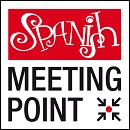Spanish schools and accommodation to study Spanish in Spain
Recent posts
Last schools
introduced
introduced
2 Accommodation

1 Spanish schools

Learning Spanish in Las Palmas Gr.Canaria. The tourist guide to study your Spanish course.
General Information. 385,000 inhabitants. Las Palmas belongs to the Autonomous Community of the Canary Islands and is the joint capital, together with Santa Cruz de Tenerife. Las Palmas was founded in 1478. It is renowned for its mild climate, its urban beaches and also for an extensive range of parks, which include a great variety of historical monuments. The city's university, Universidad de Las Palmas de Gran Canaria (ULPGC), caters for over 24,000 students. Las Palmas is a very attractive place to study Spanish with many language schools offering a wide range of courses.
Surrounding Areas. The island has been defined as a miniature continent due to its great diversity, which can be appreciated in each of its four routes. The northern route runs partly inland and partly along the coast. The southern route follows the coastal highway and passes through the most important tourist resorts, such as Playa del Inglés, Puerto Rico de Gran Canaria, with its artificial beach, and Maspalomas (56 kilometres), which is known for its gay scene and its beautiful sand dunes. The western route traverses the most sparsely inhabited part of the island, and the central route covers the inland area. Boats and excursions leave from the port of Las Palmas to the other islands of the Canary archipelago.
Main Sights. The old city wall of Las Palmas. The neighbourhood of Triana. The Anglican Church. The Columbus House Museum (Casa-Museo de Colón), and two remote chapels: Ermita de San Antonio Abad and Ermita de San Telmo.
Culture. The International Film Festival (Festival Internacional de Cine) in March. El Canarias Mediafest, a festival of digital arts and culture that takes place between October and November. The World of Music, Art & Dance (WOMAD) Festival in November. Las Palmas has several museums: the Atlantic Centre of Modern Art (Centro Atlántico de Arte Moderno); the Canary Island Museum (Museo Canario), in the district of Vegueta; the Pérez Galdós House Museum (Casa Museo Pérez Galdós) and the Maritime Museum (Museo Marítimo), among others. Theatres include Teatro Perez Galdós, Teatro Cuyás and Teatro Guiniguada. There is also an auditorium next to the Playa de Las Canteras called the Auditorio Alfredo Kraus, which includes the conference centre Palacio de Congresos de Gran Canaria. A smaller conference centre, the Centro de Iniciativas de la Caja de Ahorros de Canarias, can be found in the area of Triana.
Beaches. Las Palmas de Gran Canaria has five beaches, which can be enjoyed at any time of the year thanks to the island's good climate: Playa de las Canteras, which is the most important and popular thanks to a natural dyke offering protection from the waves; Playa del Confital; Playa de San Cristobal and Playa de la Laja, which are both pebble beaches; Playa de las Alcaravaneras, which is located between the yacht clubs Muelle Deportivo and Puerto de la Luz. The beaches are a major attraction for the many students who decide to study Spanish in Las Palmas de Gran Canaria.
Shopping. Shopping on the island is tax free, so you can find cheap products such as perfumes, leather goods, brand name fashions and electronic items. There is a wide range of shops and stores in the area of Triana and there are several shopping centres, such as Las Arenas, Ballena, 7 Palma and Muelle.
Gastronomy. The best places to try Las Palmas's typical dishes are the streets around Calle Mayor de Triana, the Port area and the Playa de Las Canteras. You will find beach bars, bars and restaurants, all of which offer good value for money. The most typical food products and dishes in Las Palmas are: fish and molluscs; honey; ‘wrinkled' new potatoes boiled in sea water and then baked and served with a spicy sauce (papas arrugás y el mojo picón); bienmesabe, which is a dessert made with honey, and gofio, a flour made from ground and toasted wheat, corn or barley; a thick soup with watercress and corn (potaje canario, con berros y piña de maíz); roast leg of pork (pata de cochino asada), cheese and wine. It is also worth highlighting the excellent tropical fruits such as banana, mango, guava and avocado.
Sports. Las Palmas has two sports stadiums: Estadio de Gran Canaria and Estadio Insular. The football club Unión Deportiva Las Palmas tend to alternate between the first and second divisions of the Spanish League. The basketball team, C.B. Gran Canaria, play in Spain's top flight ACB League. In Las Palmas de Gran Canaria you can play or learn almost any sport. There are several facilities for doing all kind of sports, such as the yacht club, Real Club Naútico de Gran Canaria, the swimming club, Club Natación Metropole, and the golf course, Real Club de Golf de Las Palmas.
Fiestas. The Carnivals of Las Palmas de Gran Canaria (February), are, together with Cádiz and Tenerife, the most important in Spain and among the most famous in the world; there are street celebrations, processions, dances and fiestas throughout Las Palmas. In the Fiesta de Tres Palmas (September-October) the Carnival queens and drag queens are chosen.
Transport. The connection by boat to other islands is via the Puerto de la Luz y de las Palmas, which is a fishing port, a commercial port, an embarkation point for passengers and a marina. The international airport of Gran Canaria is the fifth most important in Spain in terms of passengers. There is also a tourist bus which visits all of the city's well-known sights and sets off from Parque de Santa Catalina. You can go from Las Palmas de Gran Canaria to other Spanish cities by ship or by plane.
Nightlife. Students who decide to study Spanish in Las Palmas de Gran Canaria will discover a very active nightlife. The district called Vegueta is a must for going out at night as here you will find every kind of bar and discotheque. Other important nightspots are the Port area, Muelle Deportivo, Triana and Las Canteras.
Surrounding Areas. The island has been defined as a miniature continent due to its great diversity, which can be appreciated in each of its four routes. The northern route runs partly inland and partly along the coast. The southern route follows the coastal highway and passes through the most important tourist resorts, such as Playa del Inglés, Puerto Rico de Gran Canaria, with its artificial beach, and Maspalomas (56 kilometres), which is known for its gay scene and its beautiful sand dunes. The western route traverses the most sparsely inhabited part of the island, and the central route covers the inland area. Boats and excursions leave from the port of Las Palmas to the other islands of the Canary archipelago.
Main Sights. The old city wall of Las Palmas. The neighbourhood of Triana. The Anglican Church. The Columbus House Museum (Casa-Museo de Colón), and two remote chapels: Ermita de San Antonio Abad and Ermita de San Telmo.
Culture. The International Film Festival (Festival Internacional de Cine) in March. El Canarias Mediafest, a festival of digital arts and culture that takes place between October and November. The World of Music, Art & Dance (WOMAD) Festival in November. Las Palmas has several museums: the Atlantic Centre of Modern Art (Centro Atlántico de Arte Moderno); the Canary Island Museum (Museo Canario), in the district of Vegueta; the Pérez Galdós House Museum (Casa Museo Pérez Galdós) and the Maritime Museum (Museo Marítimo), among others. Theatres include Teatro Perez Galdós, Teatro Cuyás and Teatro Guiniguada. There is also an auditorium next to the Playa de Las Canteras called the Auditorio Alfredo Kraus, which includes the conference centre Palacio de Congresos de Gran Canaria. A smaller conference centre, the Centro de Iniciativas de la Caja de Ahorros de Canarias, can be found in the area of Triana.
Beaches. Las Palmas de Gran Canaria has five beaches, which can be enjoyed at any time of the year thanks to the island's good climate: Playa de las Canteras, which is the most important and popular thanks to a natural dyke offering protection from the waves; Playa del Confital; Playa de San Cristobal and Playa de la Laja, which are both pebble beaches; Playa de las Alcaravaneras, which is located between the yacht clubs Muelle Deportivo and Puerto de la Luz. The beaches are a major attraction for the many students who decide to study Spanish in Las Palmas de Gran Canaria.
Shopping. Shopping on the island is tax free, so you can find cheap products such as perfumes, leather goods, brand name fashions and electronic items. There is a wide range of shops and stores in the area of Triana and there are several shopping centres, such as Las Arenas, Ballena, 7 Palma and Muelle.
Gastronomy. The best places to try Las Palmas's typical dishes are the streets around Calle Mayor de Triana, the Port area and the Playa de Las Canteras. You will find beach bars, bars and restaurants, all of which offer good value for money. The most typical food products and dishes in Las Palmas are: fish and molluscs; honey; ‘wrinkled' new potatoes boiled in sea water and then baked and served with a spicy sauce (papas arrugás y el mojo picón); bienmesabe, which is a dessert made with honey, and gofio, a flour made from ground and toasted wheat, corn or barley; a thick soup with watercress and corn (potaje canario, con berros y piña de maíz); roast leg of pork (pata de cochino asada), cheese and wine. It is also worth highlighting the excellent tropical fruits such as banana, mango, guava and avocado.
Sports. Las Palmas has two sports stadiums: Estadio de Gran Canaria and Estadio Insular. The football club Unión Deportiva Las Palmas tend to alternate between the first and second divisions of the Spanish League. The basketball team, C.B. Gran Canaria, play in Spain's top flight ACB League. In Las Palmas de Gran Canaria you can play or learn almost any sport. There are several facilities for doing all kind of sports, such as the yacht club, Real Club Naútico de Gran Canaria, the swimming club, Club Natación Metropole, and the golf course, Real Club de Golf de Las Palmas.
Fiestas. The Carnivals of Las Palmas de Gran Canaria (February), are, together with Cádiz and Tenerife, the most important in Spain and among the most famous in the world; there are street celebrations, processions, dances and fiestas throughout Las Palmas. In the Fiesta de Tres Palmas (September-October) the Carnival queens and drag queens are chosen.
Transport. The connection by boat to other islands is via the Puerto de la Luz y de las Palmas, which is a fishing port, a commercial port, an embarkation point for passengers and a marina. The international airport of Gran Canaria is the fifth most important in Spain in terms of passengers. There is also a tourist bus which visits all of the city's well-known sights and sets off from Parque de Santa Catalina. You can go from Las Palmas de Gran Canaria to other Spanish cities by ship or by plane.
Nightlife. Students who decide to study Spanish in Las Palmas de Gran Canaria will discover a very active nightlife. The district called Vegueta is a must for going out at night as here you will find every kind of bar and discotheque. Other important nightspots are the Port area, Muelle Deportivo, Triana and Las Canteras.
© TEXT: SPANISH IN TOUR.
VIDEO: Patronato de Turismo de Gran Canarias
VIDEO: Patronato de Turismo de Gran Canarias























